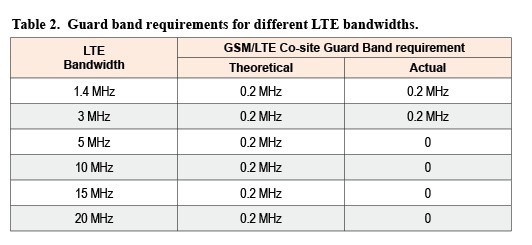An Insight into LTE 1800 Refarming
Why Refarm the 1800 MHz Spectrum for LTE Use?
Mobile data services have developed very fast in recent years. The popularity of smartphones, especially iPhone, means the number of mobile data services is doubling every year. Increasing the capacity to accommodate data services has become the top priority of mobile operators. Compared with 3G technology, LTE has high spectrum use, high peak data rates, and low latency.
However, there is not much spectrum available for LTE, and the price for LTE spectrum is very high. Many operators are therefore considering the potential of existing frequencies. In most countries, 1800 MHz is used for GSM, and it has a lot of free frequency bands for other mobile technologies. Therefore, it is possible to use these free 1800 MHz bands for LTE.
Global Analysis of the 1800 MHz Spectrum
3GPP specifies the bandwidth for the 1800 MHz spectrum as 2 × 75 MHz. This is a huge continuous bandwidth that encompasses frequencies supported in Europe, APAC, India, China, Africa, and the Middle East. 1800 MHz is technically neutral in many countries, which makes it easier to refarm enough spectrum for LTE and increases the potential of 1800 MHz becoming a worldwide roaming spectrum.
1800 MHz is suitable for wide-area coverage, and 2.6 GHz is suitable for dense urban hotspot coverage. At the very beginning of LTE deployment, 1800 MHz is more suitable for deploying data services.
The 1800 MHz band has up to twice the coverage area of the 2.6 GHz band. This halves TCO and makes it possible to cover both urban and suburban areas.

As technologies advance, SDR is making GSM1800 and LTE1800 co-sites possible. GSM1800 operators benefit by being able to reuse existing antennas, TMAs, antenna feed-lines, site space, power facilities, and backhaul transport of GSM1800.
LTE1800 Refarming Solutions
Solution A: Refarm the entire GSM1800 spectrum for LTE use.
Operators only need to swap their existing terminals from 1800 MHz to 900 MHz. The spectrum refarming is quite straightforward.
Solution B: Refarm part of the GSM1800 spectrum for LTE use. LTE1800 is located between GSM1800 frequency bands.
Operators have to consider interference between LTE and GSM at the frequency edge.
Solution C: Refarm part of the GSM1800 spectrum for LTE use. LTE1800 is located on one side of GSM1800 frequency band.
Operators have to consider interference between LTE and GSM at the frequency edge as well as interference between LTE and another neighboring frequency band.
LTE1800 Refarming Interference
When LTE1800 is located between GSM1800 frequency bands and the LTE1800 bandwidth is 1.4 MHz or 3 MHz, a guard band of 0.2 MHz is needed. If the LTE1800 bandwidth is more than 3 MHz, no guard band is needed.
When LTE1800 is located on one side of GSM1800 frequency band and the LTE bandwidth is 1.4 MHz or 3 MHz, a guard band of 0.2 MHz is also needed, and interference between LTE and its neighboring frequency band has to be considered.

Traffic Migration Solutions
Solution A: Refarm the entire GSM1800 spectrum for LTE use.
GSM1800 traffic is generally not high. The major issue is swapping user terminals to adapt to other GSM frequency bands. Currently, dual- or triple-band GSM terminals are widely spread.
Solution B: Refarm part of the GSM1800 spectrum for LTE use.
Operators have to improve spectrum utilization in GSM1800 and reduce its bandwidth. They also have to improve spectrum utilization in GSM900 and migrate traffic from GSM1800 to GSM900.
Interoperability after LTE1800 Refarming
Two solutions are possible for voice interoperability between LTE and 2G/3G.
Solution A: Circuit switched (CS) fallback. Voice services are carried on the 2G/3G system. A GSM/LTE dual-mode terminal is needed.
Solution B: Single radio voice call continuity (SRVCC). IP multimedia subsystem (IMS) is needed and the cost is very high.
Packet-switched (PS) service interoperability requires load sharing between LTE and 3G. This can be implemented in two stages.
Stage 1: When LTE system still has much capacity, UMTS/LTE dual-mode terminals will first reside in an LTE network where PS traffic is carried.
Stage 2: When LTE equipment reaches its capacity threshold, the load is seamlessly balanced between LTE1800 and HSPA. VIP LTE users reside in an LTE network for optimum service experience, and all their traffic is carried on the LTE network. Other LTE users reside in an HSPA network. Load balancing optimization ensures they can reselect the LTE network to access latency-sensitive or throughput-sensitive services such as real-time gaming and FTP downloading.
Conclusion
With LTE being deployed worldwide, market demand is growing, and the use of the GSM1800 for LTE deployment is looking favorable. The GSM1800 frequency band is becoming an important part of LTE development.